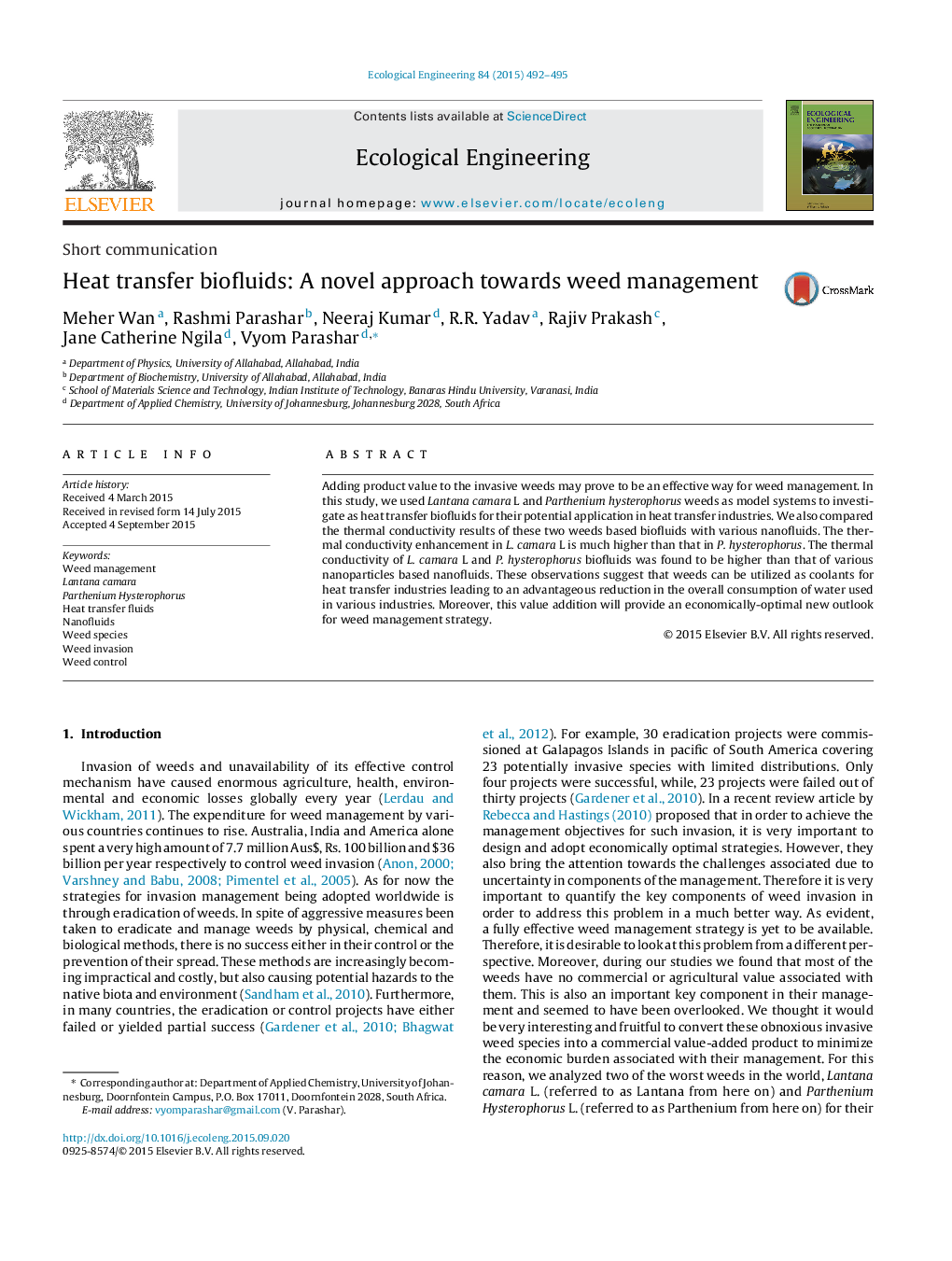| Article ID | Journal | Published Year | Pages | File Type |
|---|---|---|---|---|
| 4388818 | Ecological Engineering | 2015 | 4 Pages |
•First study on developing heat transfer biofluids using weeds viz. Lantana camara L and Parthenium hysterophorus.•The thermal conductivity enhancement in L. camara L is much higher than that in P. hysterophorus.•The thermal conductivity of L. camara L and P. hysterophorus biofluids was found to be higher than that of various nanoparticles based nanofluids.•Weeds can be utilized as coolants for heat transfer industries leading to an advantageous reduction in the overall consumption of water.
Adding product value to the invasive weeds may prove to be an effective way for weed management. In this study, we used Lantana camara L and Parthenium hysterophorus weeds as model systems to investigate as heat transfer biofluids for their potential application in heat transfer industries. We also compared the thermal conductivity results of these two weeds based biofluids with various nanofluids. The thermal conductivity enhancement in L. camara L is much higher than that in P. hysterophorus. The thermal conductivity of L. camara L and P. hysterophorus biofluids was found to be higher than that of various nanoparticles based nanofluids. These observations suggest that weeds can be utilized as coolants for heat transfer industries leading to an advantageous reduction in the overall consumption of water used in various industries. Moreover, this value addition will provide an economically-optimal new outlook for weed management strategy.
